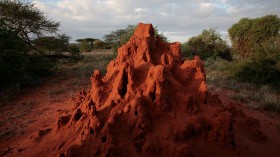New Zealand scientists have increased the alert level from 0 to alert level 1 for its giant volcano - the very same one which topped the list for largest explosions on Earth for the last 5,000 years.
100 Cubic Kilometers Then... Now 700 Earthquakes
Around 1,800 years ago, the Taupo volcano last erupted. It released material and debris into the atmosphere in an amount greater than 100 cubic kilometers.
According to the geological agency GeoNet, nearly 700 small earthquakes were found to have occurred beneath Lake Taupo, the largest lake in New Zealand, and the caldera formed by the Taupo Volcano.
The depths of the 700 earthquakes were less than 30 km, with the majority falling between 4 and 13 km. There were two clusters of earthquakes, one larger under the lake's center and east end and the other smaller to the west, originating just offshore from Karangahape. Since May, Horomatangi Reef's deformation area has been growing at a rate of 60 mm per year. The primary seismic swarm and the uplifted region were related. According to the data, magma and hydrothermal fluid movement caused seismicity and deformation.
Alert Level 1
Experts have changed the volcanic alert level from 0 to 1 in a statement.
Although the six escalating levels of unrest that make up the volcanic alert system are used, Geonet points out that eruptions can happen at any level and that the levels may not always move in order as activity can change quickly.
Around 200 BCE, the Taupo volcano last erupted, spewing more than 100 cubic kilometers of material into the atmosphere.
Before any people were living there, a sizable portion of the central North Island in New Zealand was destroyed by the eruption.
According to Geonet, the devastating eruption was the biggest on Earth in the previous 5,000 years.
Although the Taupo Volcano alert level was raised to 1 for the first time, the agency noted that there had previously been unrest and that the likelihood of an eruption remained extremely low.
The Volcanic Alert Level modification was motivated by ongoing monitoring data analysis, research, and expanding understanding of previous unrest.
On a six-level scale, Alert Level 1 is the lowest and denotes "minor volcanic unrest," which is distinguished by ongoing inflation and seismicity. Under Lake Taupo, seismic activity increased starting in May. Initially, there were about 30 earthquakes per week, but by early September, there were about 40. Over 1,000 people reported feeling the 10 September earthquake, which was the largest recorded so far this year with a magnitude of 4.2, as per Smithsonian Institute data.
Read also: 6.8 Magnitude Earthquake Strikes Mexico; At Least Two People Dead
Earthquakes and Deformation
According to GeoNet, the quakes and deformation may continue for several more weeks or months.
Due to its location at the meeting point of the Australian and Pacific tectonic plates, New Zealand is frequently struck by earthquakes and volcanic eruptions.
22 people were killed and 25 people, mostly tourists, were seriously hurt when White Island, also known as Whakaari, suddenly erupted, spewing steam and ash 2019, Sky News reports.
Over the previous 150 years, Taupo has experienced 17 prior episodes of unrest, some of which are more significant or more powerful than the current episode and many of which occurred before written records were kept. The last eruption happened around 232 CE, and none resulted in one.
Related article: Supervolcano Warning Issued for Taupo Volcano for the First Time After Last Eruption 1,800 Years Ago
© 2024 NatureWorldNews.com All rights reserved. Do not reproduce without permission.





